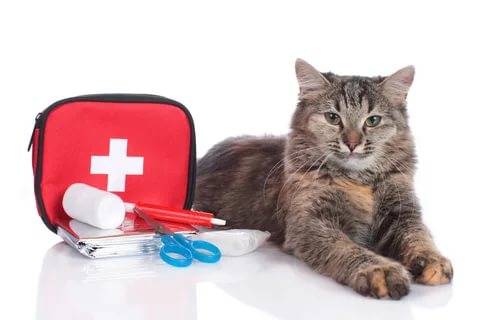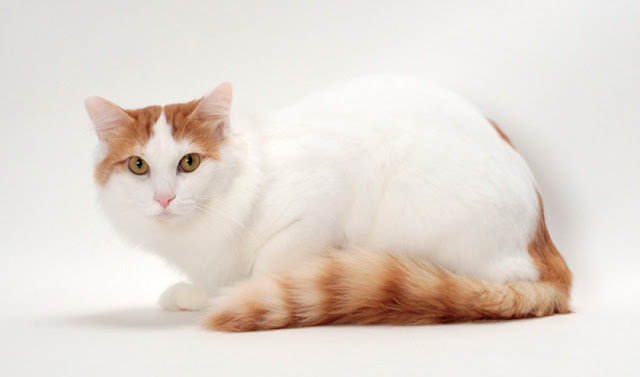Felines are the absolute generally mind boggling, inquisitive and empathetic creatures I know. Translating feline conduct is unquestionably more confounded and testing than most different creatures. Again and again, we erroneously apply canine encounters to clarify why a catlike demonstrations a specific way. That doesn't work. Felines are not little canines.
A genuine model is understanding why felines sway their tails. For canines, tail swaying is an away from of satisfaction, fervor or possibly a little anxiety. A few felines may sway their tails when glad, however for most cats, it's a completely extraordinary story.
First off, felines don't just sway their tails. How they sway them, what their body resembles while swaying and when they wave their "fifth leg" all convey huge significance. Disentangling cat non-verbal communication is a science with numerous unanswered inquiries. We should analyze what we think about cat tail articulations and how it can assist you with being a superior feline parent.
Tail welcoming
At the point when two felines welcome one another, you may have seen they approach with tails expanded high noticeable all around. A raised tail held upstanding is a feline's method of saying, "Hi!"
Common head scouring, called allorubbing, regularly follows the tail welcoming.
Photograph by Sereja Ris on Unsplash
Felines will likewise utilize this normal tail welcoming with human relatives. Next time your feline methodologies you, pay special mind to a tail welcoming.
Tail dread
On the off chance that the hair along your feline's tail and spine is standing upstanding, called piloerection, look out. Erect hairs along the rear of a feline sign dread and protective animosity. The hypothesis is the feline is attempting to seem bigger to threaten a likely adversary. For this situation, something, possibly you, frightened them.
The exemplary "'fraidy feline" or "Halloween feline" is regularly portrayed with hair standing up and is an all inclusive sign a feline methods business.
Photograph by Paul Hanaoka on Unsplash
The key exercise is that piloerection is the consequence of dread, not through and through hostility. At whatever point I see a feline with hair-on-end, I quiet myself considerably more, hinder my developments further and do everything possible to loosen up the feline and console them I intend no damage.
Tail animosity
Obviously, a few felines are forceful. You can spot hostile animosity by a tail curved upwards at the base (close to the body) and afterward twisted down toward the legs. You might see piloerection. This is a subtler stance and is a feline's last visual admonition before they strike.
Lamentably, numerous genuinely forceful felines figure out how to disguise this showcase until the last second prior to assaulting. On the off chance that you spy this tail position, chill out.
Tail swaying
There are a couple of varieties of cat tail swaying. This first regularly goes with a tail welcoming. This sort of tail sway is distinguished as a simple to and fro wave of an upstanding tail. It's a further explanation that the feline is glad, agreeable and content. Much head scouring follows. Another tail sway happens at whatever point your kitty affectionately folds their tail over your leg or arm. A delicate handle, delivery and tail flipping demonstrates you're cherished.
A delicate, slow, side-to-side wash is another tail sway that clues play. A few felines even sway their tails along these lines while resting. In case you're adoring on your feline and notice the tail wash, don't be astonished if a palm jump follows. You'll frequently notice tail washing when playing with toys or quill dusters.
Felines will likewise sway and jerk their tail when profoundly thinking. These short, brisk spasms are ordinarily seen when "window chasing." The hypothesis is felines are so centered around basically following prey outside their window that they impersonate a portion of their intuitive savage stances.
At long last, recollect that tail angled close to the back and afterward conveyed down low by the legs? On the off chance that you see that and a jerking tail, truly chill out. That truly is your last admonition, in case you're fortunate.
Agony
I'd prefer to add one extra tail sway: torment.
As a veterinarian, I frequently see felines with sicknesses and wounds that cause inconvenience. Since felines are staggeringly skilled at concealing agony, I cautiously search for inconspicuous tail jerks. On the off chance that your feline isn't feeling great and you spot them waving their tail while setting down, it very well may be an indication of torment. As far as I might be concerned, that is a feline's method of crying, "Help."
In those cases, it's in every case best to get to the veterinarian to look at things. Furthermore, on the off chance that you have a pet protection plan for your feline, any vital medicines or prescriptions your feline requirements can be covered.
Felines are astonishing creatures. We're simply starting to decipher their correspondence codes. My best counsel is to start intently noticing your feline at play, unwinding, eating and hanging out. You'll start to comprehend your feline's typical postural and conduct jargon. At the point when they're pushed or wiped out, you'll be better prepared to recognize these progressions prior and look for help sooner. Up to that point, keep those tails held high and swaying!






Post a Comment